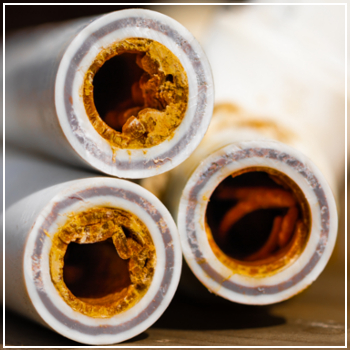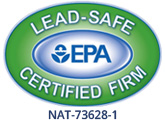What Are Rotting or Corroded Pipes?
 Corrosion can result in “rotting pipes” and change the potability of water flowing through your tap. This may release lead and other toxic chemicals, affect your home’s structure and contribute to serious health issues.
Corrosion can result in “rotting pipes” and change the potability of water flowing through your tap. This may release lead and other toxic chemicals, affect your home’s structure and contribute to serious health issues.
Corrosion affects nearly all types of pipes, from older steel and iron to newer copper and PEX options. You may find that you need to have all the pipes in your home replaced to remedy the issue. Here’s what you should know.
What Are Corroded Pipes?
Corrosion generally starts from a pipe’s interior. Rust begins along the inside and eventually leaks through the material, potentially causing a burst pipe. Sources involve electrochemical changes or oxidation and, in certain conditions, may affect or start from the exterior.
This combination can result in pitting, crevices and uniform rusting or may only affect the joints, based on how your plumbing was constructed or repaired. To some extent, corrosion is to be expected, as pipes are not designed to last forever.
What Can Happen?
When the pipes in your home begin to rot:
- Lead or copper can enter drinking water going through the tap.
- Part or all of your plumbing system may stop working, as rust and other debris can clog the pipe.
- You may notice unexplained odors, mold, staining or leaks.
- You may notice your water bill goes up in conjunction with leaking and mold.
- Corrosion releases toxic gases into your home, which can contribute to various respiratory issues, headaches, dizziness and nausea.
How Do Your Pipes Start to Rot?
Multiple factors can cause your pipes to corrode, including:
- Electrochemical factors, stemming from the relationship between plumbing and wiring or can occur after lightning strikes your home.
- Wear and additional substances in the water, such as sediment and dirt, cause pipes to rust from the interior.
- Plumbing design, including a poorly laid out system or pipes that are too narrow for the speed water travels.
- Mixing metals, which results in a condition known as galvanized corrosion. This occurs when brass and copper pipes are attached together with a steel adapter. The two metals eat away at the steel, causing rust buildup at that specific joint.
Signs of Corroded Pipes
Multiple signs can point to rotting or corroded pipes in your home:
- Discolored water from the tap, including brown, yellow, green or a distinct blue. Color will vary based on your pipes
- A strong odor, often described as “metallic”
- A strange taste, either sweet or metallic
- Decreased water pressure for faucets, the toilet and appliances
- Multiple leaks throughout your home
- A burst pipe in an area not exposed to the cold
- A gurgling, churning or clanking sound coming from the pipes
- Water from the tap or shower cannot consistently hold its temperature
- A damaged foundation, including holes and cracks that pass up through the walls
- Mold, which can occur in areas with smaller, pinhole leaks
- Unexplained dampness, including behind sinks and appliances and causing flooring and baseboards to warp or rot
- Discolored pipes
- Sewage backups
- Slow water drainage from sinks and bathtubs
If you notice any of these signs, MJ Fahy & Sons can assess your home’s plumbing and make repairs. Contact us to schedule an appointment.




